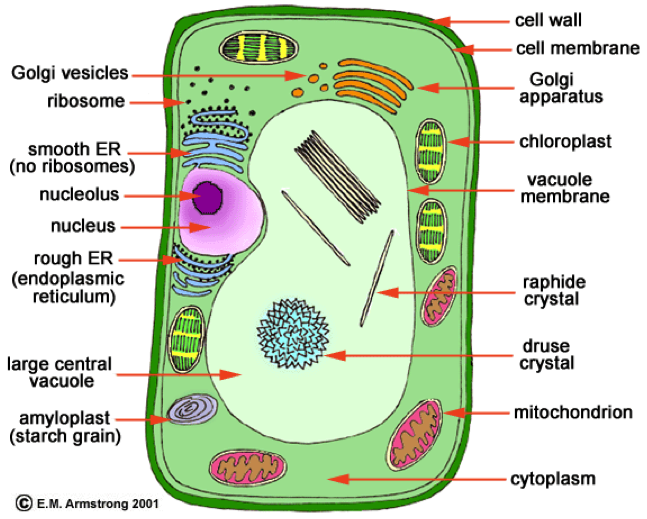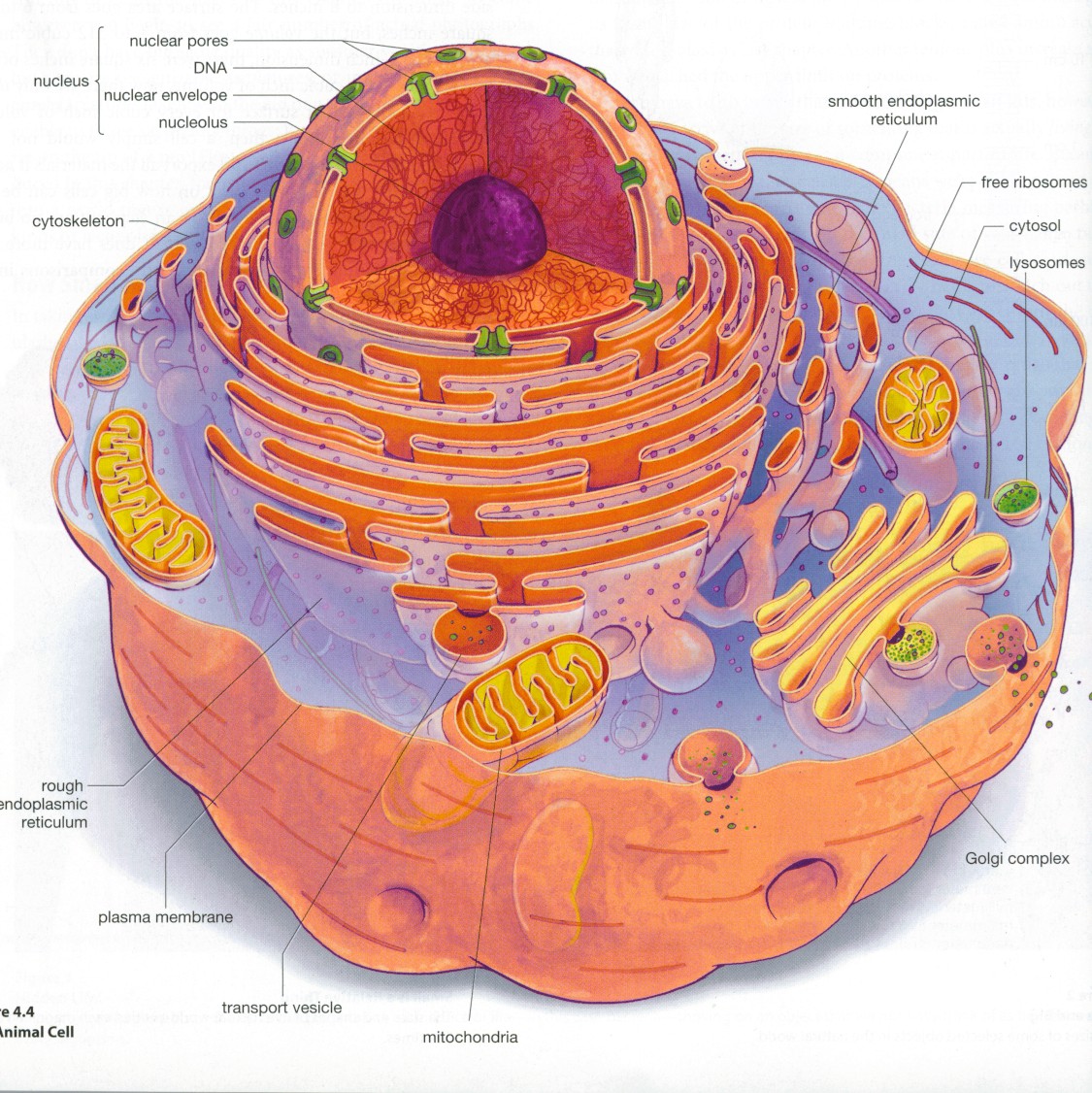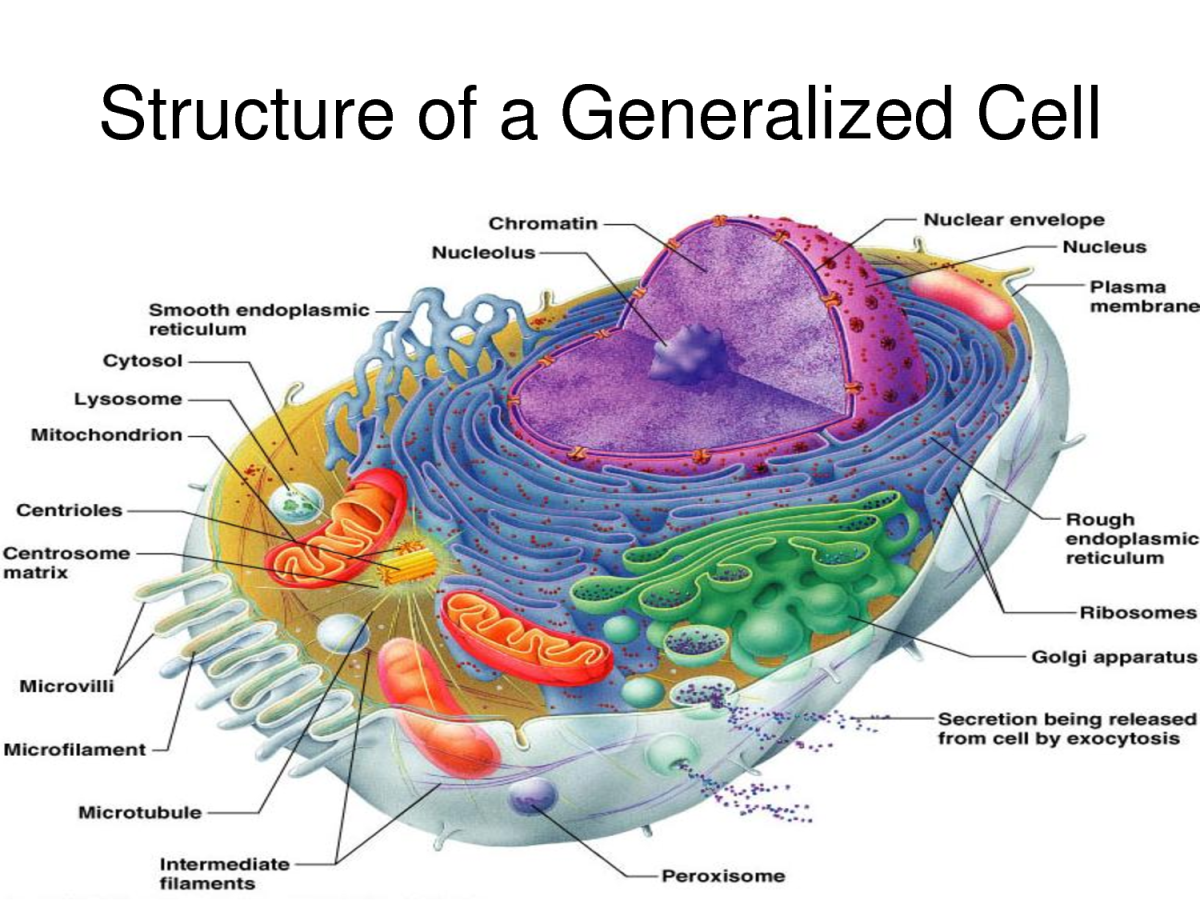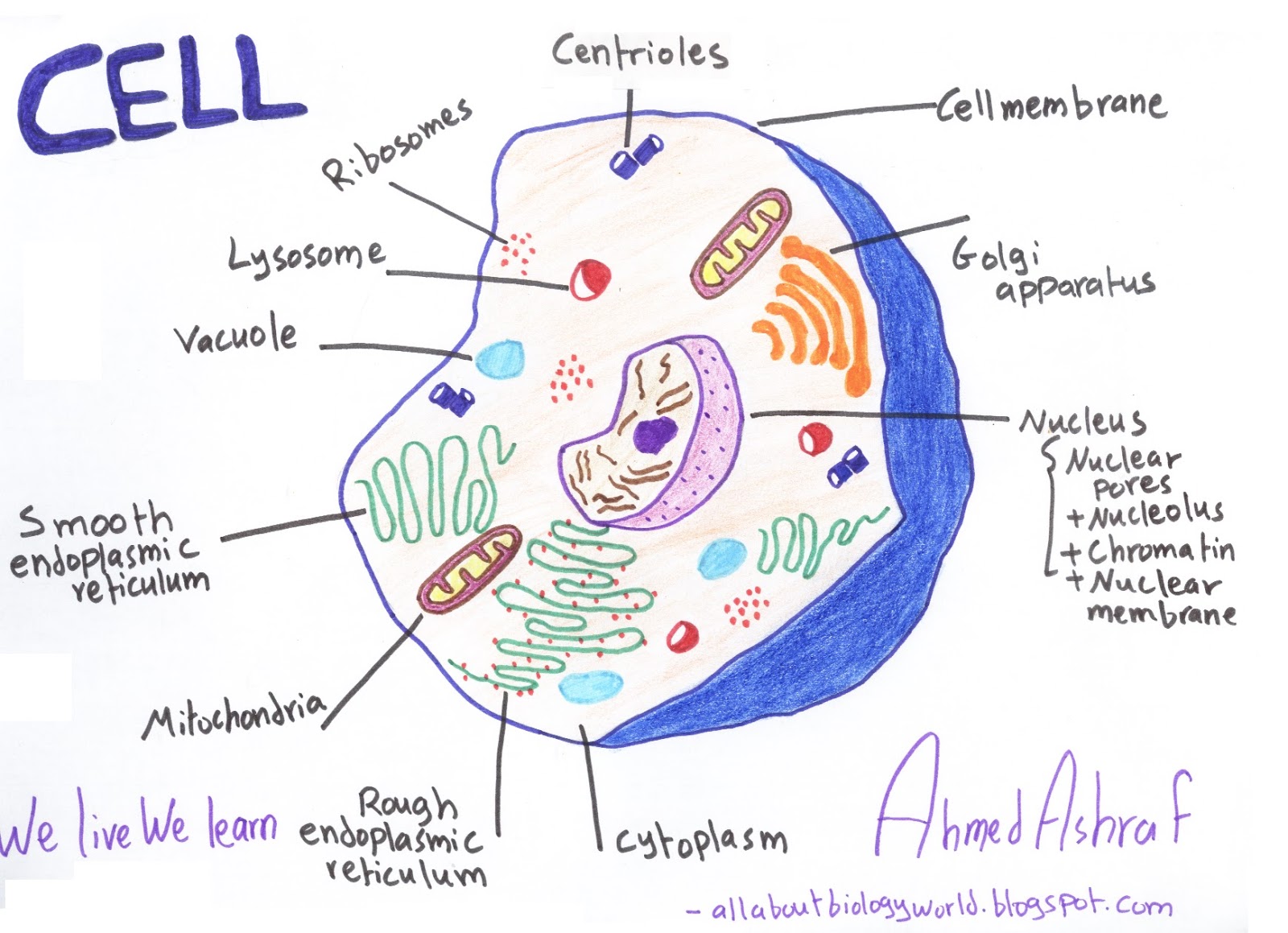
The animal cell diagram. Vector illustration on white Etsy in 2021 Animal cell, Cell diagram
Labeled diagram of a typical animal cell Nucleus. The nucleus contains all the genetic material in a cell. This genetic information is called deoxyribonucleic acid (DNA). DNA contains all the instructions for making proteins, which control all of the body's activities. Therefore, the nucleus is like the manager's office of the cell.

Figure 1.1. Eukaryotic Cell Numerous membranebound organelles are found in the cytoplasm of a
The plant cell wall is outside the cell membrane, and it provides structure for the cell. On the left is a circle representing an animal cell. The cell contains many cell parts with different shapes. A small bean-shaped cell part is labeled mitochondrion. A medium-sized circular cell part that has squiggly lines inside is labeled nucleus.

Cell Structure
Cell diagram labeled. For this exercise we'll start with an image of a cell diagram ready labeled. Study this and make sure that you're clear about which structure is found where. Cell diagram unlabeled. It's time to label the cell yourself! As you fill in the cell structure worksheet, remember the functions of each part of the cell that.

Animal Cell diagram with labels by Russell Kightley Media
A plasma membrane encloses the cell contents of both plant and animal cells, but it is the outer coating of an animal cell. Animal Cell Structure: Organelles and Their Functions. Worksheet: Label the Parts of an Animal Cell [Google Apps worksheet][worksheet PDF][worksheet PNG][answers PNG] Common Questions About Animal Cells.

Biology Cell Structure and Functions
A cell is the smallest living thing in the human organism, and all living structures in the human body are made of cells. There are hundreds of different types of cells in the human body, which vary in shape (e.g. round, flat, long and thin, short and thick) and size (e.g. small granule cells of the cerebellum in the brain (4 micrometers), up to the huge oocytes (eggs) produced in the female.

Organelles, cell growth and cytoskeleton Diagram Quizlet
Cell labelling diagram. Below are some examples of what cells labelled with fluorescent dyes might look like. Hopefully, you now have more understanding of cell labelling and how useful it is! Cell Labeling - Key takeaways.

Eukaryotic cell structure diagrams Biological Science Picture Directory
Diagram of a plant cell with components labeled. Image modified from OpenStax Biology. [Attribution and references]. is the transport network of the cell and it extends from and connects the nuclear membrane to the plasma membrane of a cell. But then whenever we draw a diagram of a typical plant or animal cell, we never extend it to the.

Animal Cell Well Labelled Diagram Preview We did not find results for
Animal cells have a basic structure. Below the basic structure is shown in the same animal cell, on the left viewed with the light microscope, and on the right with the transmission electron.

Cells
Eukaryotic Cells: 1. Eukaryotes are sophisticated cells with a well defined nucleus and cell organelles. 2. The cells are comparatively larger in size (10-100 μm). 3. Unicellular to multicellular in nature and evolved ~1 billion years ago. 4. The cell membrane is semipermeable and flexible. 5. These cells reproduce both asexually and sexually.

Biology Club Our cells 1 ( structure, function, division, disorder & cycle )
The cell structure illustrations for these diagrams were generated in BioRender. Both diagrams feature a drag-and-drop labelling activity created with H5P here on Learnful. These h5p resources are made available openly with the CC BY license. Plant Cell Structure: Animal Cell Structure:

Explain the nucleus of a cell with a neat labeled diagram Science Cell Structure and
Eukaryotic cells also have organelles, which are membrane-bound structures found within the cell. If you looked at eukaryotic cells under a microscope, you'd see distinct structures of all shapes and sizes. Prokaryotic cells, on the other hand, would look more uniform because they don't have those membrane-bound structures to break up the cell.

South Pontotoc Biology Plant and Animal Cell Diagrams
cell, in biology, the basic membrane-bound unit that contains the fundamental molecules of life and of which all living things are composed.A single cell is often a complete organism in itself, such as a bacterium or yeast.Other cells acquire specialized functions as they mature. These cells cooperate with other specialized cells and become the building blocks of large multicellular organisms.

animal cell diagram easy Kris Hammett
Structure of a cell: Quiz 2; Structure of a cell: Unit test; About this unit. This unit is part of the Biology library. Browse videos, articles, and exercises by topic. Introduction to cells. Start your cellular journey the right way: with some history and some microscopy! Here, we'll learn more about how cells were discovered, how they can be.

Structure of cell Cell structure and functions, Class 8
Cell Notation (Cell Diagrams) Recall that standard cell potentials can be calculated from potentials E 0 cell for both oxidation and reduction reactions. A positive cell potential indicates that the reaction proceeds spontaneously in the direction in which the reaction is written. Conversely, a reaction with a negative cell potential proceeds.

Biology 101 Cells Owlcation
Labeled Animal Cell Diagram. Blank Animal Cell Diagram Worksheet. The third and fourth diagrams are animal cell diagram worksheets. Quiz yourself by filling in the blanks. Unlabeled Animal Cell Diagram. Finally, an unlabeled version of the diagram is included at the bottom of the page, in color and black and white. This may be useful as a.

Cell Structure and Function Part 1 The Organelles Medical Exam Prep
A diagram of a plasma membrane shows a phospholipid bilayer with 3 proteins embedded in the bilayer. One of the proteins is shown with a channel in it. The 3 proteins have lines with the label integral membrane proteins. On the inner side of the phospholipid bilayer is another protein that is positioned up against the inner portion of the bilayer.